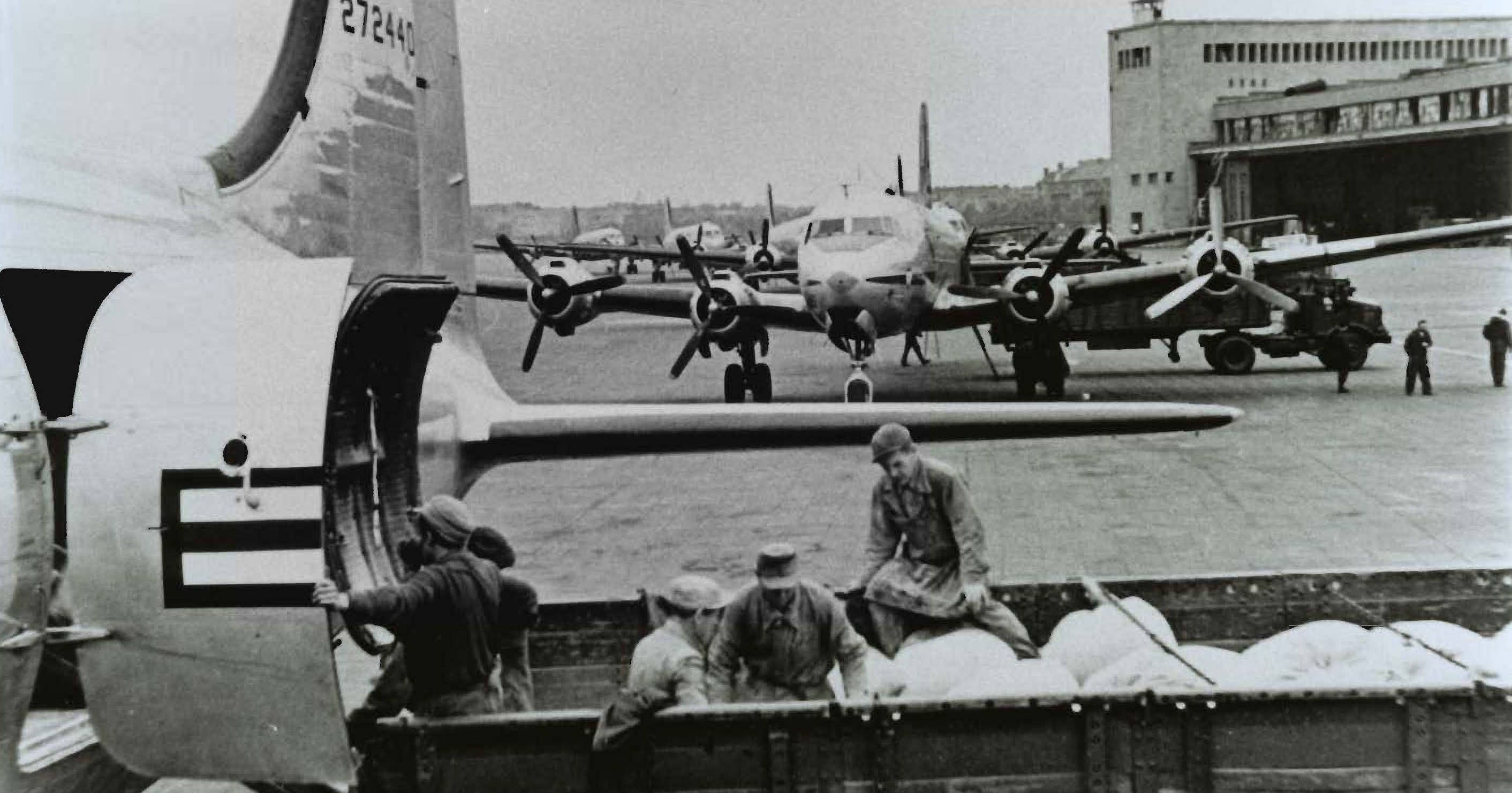On May 12th, 1949, one of the first crises of the Cold War came to end when the Soviet Union lifted its 11-month blockade against West Berlin. A massive U.S.-British airlift had broken it.
At the end of World War II, Germany was divided into four sectors administered by the four major Allied powers: the USSR, the United States, Britain, and France. Berlin, the capital, was also divided into four parts, though it was located well within the USSR sector. The future of Germany was hotly contested among the allies. The United States, Britain, and France eventually united their sectors into one economic zone, which became the independent nation of West Germany. The Soviets withdrew from the council and formed East Germany. Likewise, Berlin was formed into two parts under separate rule.
When the Western powers introduced a new Deutsche mark currency, in West Germany and West Berlin, the Soviets saw that as an attack on the East Germany currency and began a blockade of all rail, road, and water communications between Berlin and the West. Britain and the United States responded with the largest airlift in history. 278,288 relief missions in 14 months flew in 2,326,406 tons of supplies, 2/3 of which was coal to run the power plants. Flights were made around the clock. At the height of the airlift, in April 1949, planes were landing in the city every minute.
The Soviets made no effort to block the airlift and on May 12th, 1949 allowed the first American and British convoys to drive the 110 miles to Berlin to continue to supply West Berlin.










